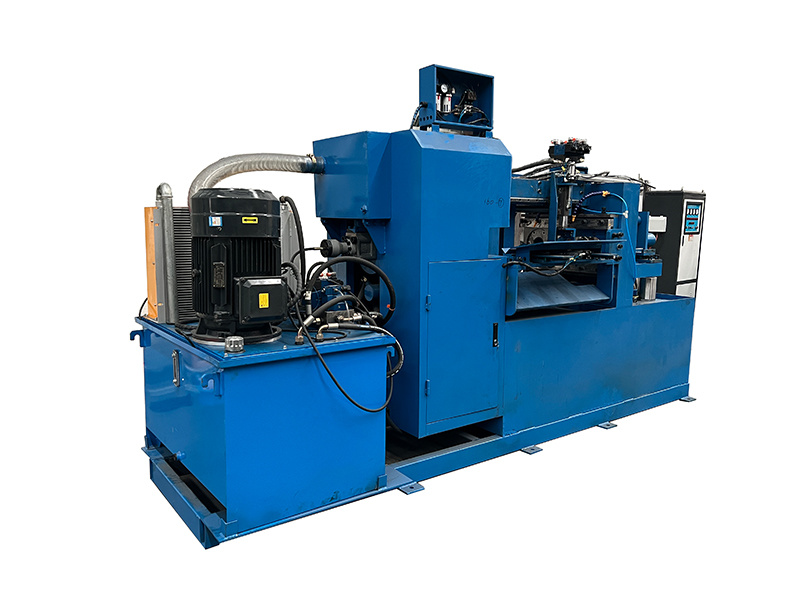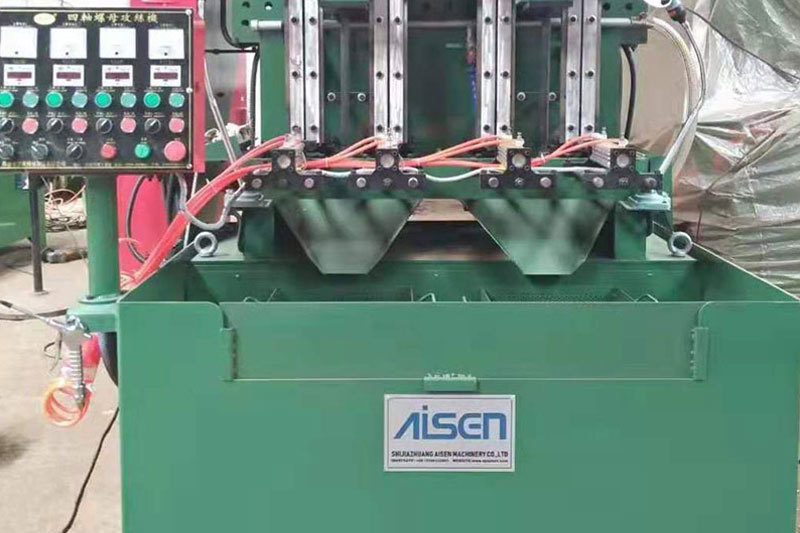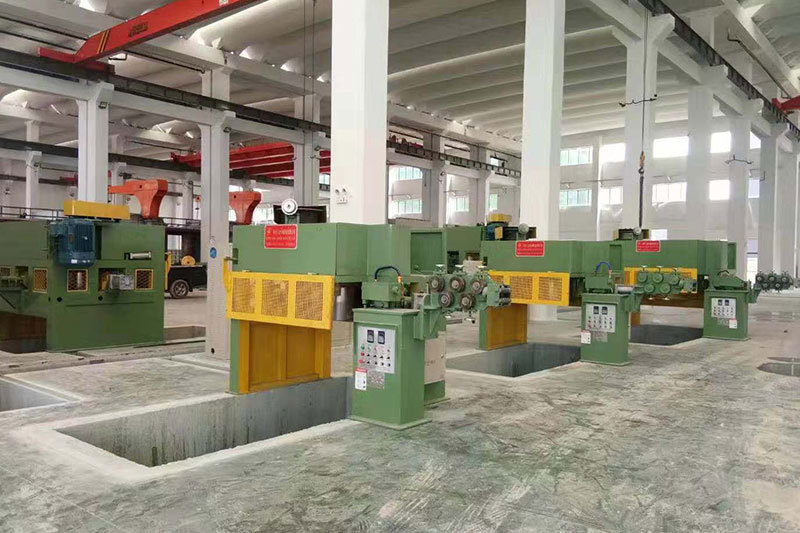Comparing Bolt Hot Forging Machines with Traditional Forging Methods: A Comprehensive Analysis
Summary:
Comparing Bolt Hot Forging Machines with Traditional Forging Methods: A Comprehensive Analysis
Table of Contents
Introduction to Forging Techniques
Understanding Hot Forging
Traditional Forging Methods Explained
Benefits of Bolt Hot Forging Machines
Cost Comparison: Hot Forging vs. Traditional Methods
Time Efficiency in Manufacturing
Quality and Reliability: A Key Consideration
Th

Comparing Bolt Hot Forging Machines with Traditional Forging Methods: A Comprehensive Analysis
Table of Contents
- Introduction to Forging Techniques
- Understanding Hot Forging
- Traditional Forging Methods Explained
- Benefits of Bolt Hot Forging Machines
- Cost Comparison: Hot Forging vs. Traditional Methods
- Time Efficiency in Manufacturing
- Quality and Reliability: A Key Consideration
- The Future of Forging Technology
- Frequently Asked Questions
- Conclusion
Introduction to Forging Techniques
The forging industry has evolved significantly over the years, transitioning from traditional methods to advanced techniques such as Bolt Hot Forging. Understanding these processes is crucial for manufacturers looking to optimize their production lines, improve efficiency, and reduce costs. This article delves into the intricacies of Bolt Hot Forging Machines and compares them with traditional forging methods, enabling professionals to make educated choices for their manufacturing needs.
Understanding Hot Forging
Hot forging is a manufacturing process where metal is heated above its recrystallization temperature and then shaped by applying force. This technique enhances the metal's ductility, allowing it to be formed into intricate shapes while retaining its strength. **Bolt Hot Forging Machines** specifically cater to the production of bolts and similar fasteners, offering unparalleled precision and consistency.
###
Process of Hot Forging
The hot forging process typically involves the following steps:
1. **Heating the Metal**: The raw material, usually steel or aluminum, is heated in a furnace until it reaches the desired temperature.
2. **Forging**: The heated material is then placed into a die and subjected to mechanical force, shaping it into the final product.
3. **Cooling**: After shaping, the item is cooled, either naturally or through quenching, depending on the desired properties.
This process allows for reduced material wastage and better mechanical properties compared to cold forging methods.
Traditional Forging Methods Explained
Traditional forging methods include techniques like open-die forging and closed-die forging. These methods have been in use for centuries and involve manually hammering or pressing metal into shape.
###
Open-Die Forging
Open-die forging allows for the shaping of large metal pieces without the constraints of a mold. While this method is versatile, it often results in longer production times and higher labor costs.
###
Closed-Die Forging
Closed-die forging, on the other hand, involves the use of specific molds to create parts. While it provides better dimensional accuracy, the initial setup costs can be high, making it less appealing for smaller production runs.
Benefits of Bolt Hot Forging Machines
The rise of **Bolt Hot Forging Machines** has transformed the forging landscape, offering several advantages over traditional methods.
###
Increased Production Speed
One of the most significant benefits of hot forging is the speed at which parts can be produced. Automated systems allow for rapid cycle times, minimizing downtime and increasing overall productivity.
###
Enhanced Material Properties
Hot forging improves the mechanical properties of metals, resulting in finished products that are stronger and more durable. The process also reduces the likelihood of defects such as cracks or voids.
###
Lower Energy Consumption
While heating the metal requires energy, the efficiency of hot forging machines often results in lower overall energy consumption compared to traditional methods. This leads to cost savings in both energy bills and environmental impact.
Cost Comparison: Hot Forging vs. Traditional Methods
When evaluating the costs associated with forging methods, several factors come into play, including initial investment, operational costs, and long-term savings.
###
Initial Investment
Bolt Hot Forging Machines typically require a higher initial investment compared to traditional forging equipment. However, the long-term benefits often justify this cost.
###
Operational Costs
Operational costs for hot forging are generally lower due to increased efficiency and reduced labor requirements. Traditional methods may incur higher costs due to manual labor and longer production times.
###
Long-Term Savings
Investing in Bolt Hot Forging Machines can lead to significant long-term savings through improved production efficiency, lower material wastage, and enhanced product quality.
Time Efficiency in Manufacturing
Time efficiency is crucial in today’s fast-paced manufacturing environment. Bolt Hot Forging Machines streamline production processes, allowing manufacturers to meet tight deadlines and respond quickly to market demands.
###
Rapid Prototyping
The ability to quickly produce prototypes is a notable advantage of hot forging. Manufacturers can test designs and make adjustments without significant downtime.
###
Consistent Production Runs
Automated hot forging systems ensure that each production run is consistent, reducing the time spent on quality control and rework.
Quality and Reliability: A Key Consideration
In manufacturing, the quality and reliability of products are paramount. Bolt Hot Forging Machines deliver superior quality compared to traditional methods.
###
Superior Mechanical Properties
Hot forged products exhibit enhanced mechanical properties, including improved tensile strength and fatigue resistance. This ensures that the final products can withstand various operational stresses.
###
Reduced Defect Rates
With precise control over the forging process, manufacturers experience lower defect rates, leading to increased customer satisfaction and reduced costs associated with returns or rework.
The Future of Forging Technology
As technology continues to evolve, the forging industry is poised for further advancements. Innovations in automation, materials science, and machine learning are expected to play a significant role in shaping the future of forging.
###
Integration of Smart Technologies
The integration of smart technologies, such as IoT and AI, into forging machines can optimize production processes, reduce waste, and enhance predictive maintenance capabilities.
###
Emerging Materials
As new materials are developed, hot forging techniques will adapt to accommodate these advancements, ensuring manufacturers can produce high-quality products that meet the demands of various industries.
Frequently Asked Questions
1. What is hot forging?
Hot forging is a manufacturing process where metal is heated above its recrystallization temperature and shaped through applied force.
2. How does hot forging compare to cold forging?
Hot forging offers better ductility and mechanical properties but requires heating, whereas cold forging is performed at room temperature, resulting in less energy consumption but potentially lower material strength.
3. What are the main advantages of Bolt Hot Forging Machines?
The main advantages include increased production speed, enhanced material properties, lower energy consumption, and reduced operational costs.
4. What types of products can be made using hot forging?
Hot forging is commonly used to manufacture bolts, nuts, gears, and other complex shapes that require high strength and durability.
5. How do hot forging machines affect production costs?
While the initial investment might be higher, hot forging machines typically lead to lower operational costs and long-term savings through efficiency and reduced waste.
Conclusion
In the dynamic world of manufacturing, the choice between Bolt Hot Forging Machines and traditional forging methods is pivotal. While traditional methods have historical significance and established reliability, the advanced capabilities of hot forging machines present compelling advantages in terms of speed, quality, and overall efficiency. As manufacturers continue to seek ways to optimize their operations and meet the demands of an ever-evolving market, investing in hot forging technology may prove to be a transformative decision. By understanding the nuances of both methods, industry professionals can make informed choices that enhance productivity and foster innovation.
Latest News
AISEN Four axis nut tapping machine ready for shipment to Russia
Four axis nut tapping machine for DIN934 M8,M10 Standard hex nut is ready for shipping to Russia by land transportation.
AISEN machinery inverted wire drawing machine
We hope to cooperate with more customers for mutual development and benefits. You are welcome to contact us









